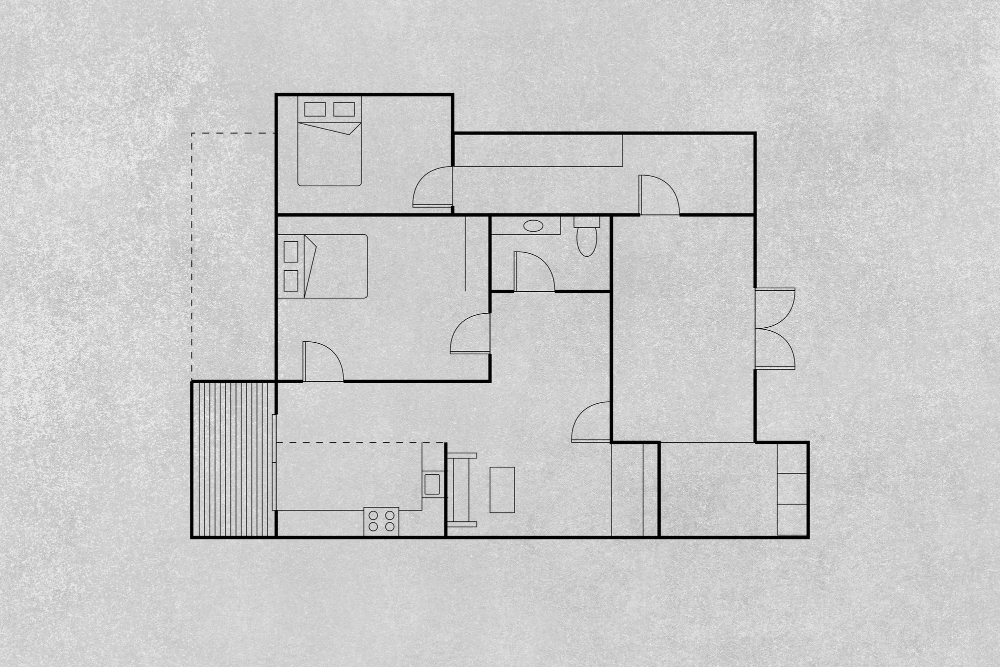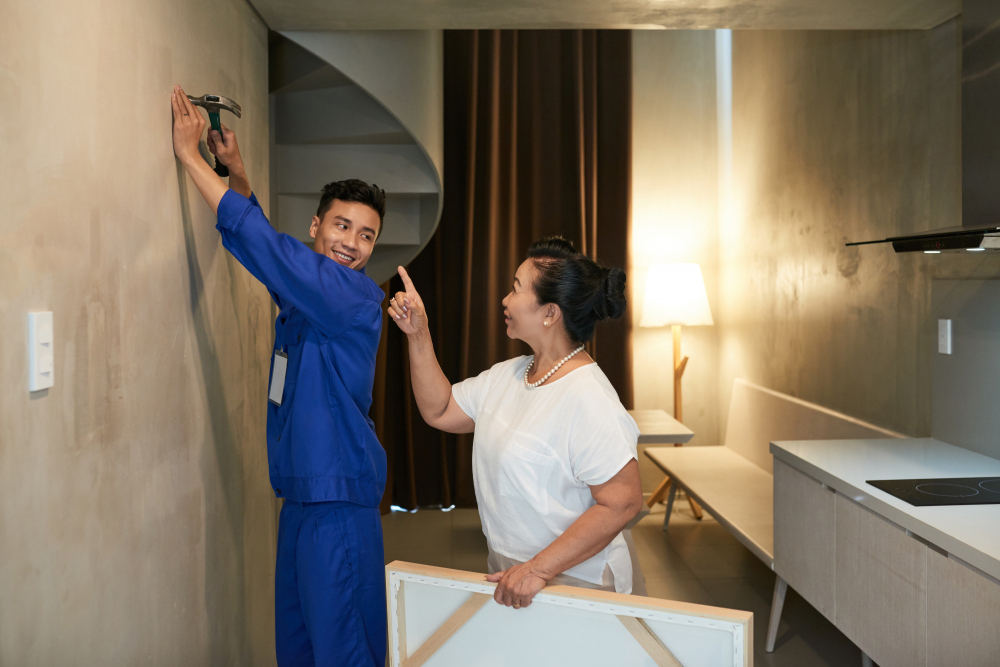Renovating a home in Malaysia is an exciting opportunity to create a space that truly supports the way you live.
With the right guidance, the journey can be smooth, inspiring, and deeply rewarding.
This guide outlines a clear and practical home renovation design process to help you approach your home renovation project with confidence and clarity
Key Takeaways
- Stick to a clear renovation process that covers planning, approvals, layout changes, material selection, execution, and final inspection.
- Apply smart renovation tips like budgeting for extras, doing regular site checks, and choosing durable materials to ensure long-term satisfaction.
- Work with experienced renovation and design professionals to streamline the process, avoid costly mistakes, and achieve a polished result.
Step-by-Step Guide to the House Renovation Process
A successful renovation starts with a clear roadmap. The home remodeling steps below outline the typical house renovation process in Malaysia, highlighting what to expect and how to prepare at each stage.
1. Define Your Goals and Budget
Before any design or demolition begins, it’s important to get clear on what you want to achieve. Are you aiming to improve functionality, refresh the aesthetic, or increase the property’s long-term value? Knowing your priorities helps guide every decision that follows.
Once your goals are defined, determine a workable budget with professional fees. Include a buffer (usually 10% to 15%) for unexpected costs such as structural fixes or material upgrades.
Tip: Start with areas that deliver the most impact, such as the kitchen, bathroom, or living space. These zones often influence how the rest of the home feels and functions.
Get inspired by Muji style furniture in Malaysia for minimalist, calming spaces or explore luxury home interior design ideas that add sophistication and style.
2. Initial Consultation & Planning

Budget sorted? Vision roughly in mind? That’s a good moment to bring someone in. During the first visit, they’ll walk the space, ask questions, and notice things you might’ve missed.
You’ll probably start chatting about timelines, rough numbers, and what’s actually possible. Sometimes a few quick sketches come out of it—not final, but enough to get ideas moving.
Tip: Say what you need, even if it feels obvious. What matters to you might not be written in any plan.
3. Understand Local Building Regulations and Restrictions
Before calling in the renovation contractor, take time to find out what’s legally allowed. It’s easier to sort out permits now than deal with penalties later.
For landed properties, changes like home extension or structural changes often need approval from the local council. You may be asked to submit layout drawings and wait for permits.
In high-rise units such as condos or apartments, the building’s management or Joint Management Body (JMB) will usually need to sign off on the work.
Management offices often have their own conditions. Some focus on noise, others care about how debris is handled, or when workers are allowed on-site. These aren’t always obvious, so it’s best to clarify early.
Tip: Get everything in writing before you start. Verbal approvals won’t help if issues come up later.
Planning a terrace house renovation or looking for smart upgrades for your unit? Discover essential guidelines and small condo interior design tips to maximise your space without major work.
4. Structural & Layout Changes

With approvals in place, the renovation can move into modifying the structure and layout of the home. Changing the layout often means shifting walls or opening up space to improve how the home feels and functions.
It’s especially helpful in houses where daily life is evolving—like when kids get older or an elderly parent moves in. This is also the point to look at wiring and plumbing. If sockets or pipes no longer make sense in the new setup, better to fix it now than regret it later.
Tip: Try not to design too tightly around your current routine. Life shifts—your layout should be able to shift with it.
Curious about how to transform your bungalow into a spacious, modern haven? Explore open concept room ideas in Malaysia for practical tips and design inspiration.
5. Engage a Professional Renovation Partner

Renovations come with a lot of moving parts. Having someone experienced to guide the home improvement process can keep things steady when plans shift or problems pop up. A good contractor handles the mess behind the scenes so you don’t have to chase after every detail.
They should handle the heavy lifting behind the scenes: managing trades, keeping the schedule moving, and stepping in when unexpected issues arise. Clear communication is key to avoiding crossed wires and unnecessary delays.
Tip: Check their past work. Ask around. What others say after working with them will tell you far more than any brochure ever could.
6. Plan Your Design & Materials
Now it’s time to focus on atmosphere and detail. This means choosing a design style, making colour selection that suit the mood you want, and picking quality materials that work for your lifestyle and Malaysia’s climate.
Sorting out details like flooring, lighting points, and built-ins early can prevent mismatched choices and reduce last-minute stress later in the process. It also helps avoid last-minute changes that can affect the timeline or budget.
Tip: Strike a balance between form and function. Materials should look good and stand up to daily wear and tear, especially in high-traffic areas.
Want to make the most of your space and style? Learn how to plan effectively and choose the right materials with our expert tips on semi D house design.
7. Material & Finish Selection

After finalising the design, attention turns to selecting the materials that shape the space—tiles, flooring, paint, cabinetry, lighting, and fittings.
These decisions impact style, comfort, upkeep, and how well the space holds up in Malaysia’s climate.
Think about the daily use instead of focusing only on the appearance.
Tip: Select options that are resilient, easy to maintain, and cohesive with the overall feel of your home.
8. Monitor the Renovation Progress

Once construction begins, it helps to stay present. Visiting the site now and then gives you a better sense of progress and lets you spot any concerns before they turn into costly problems.
The renovation usually progresses in stages such as demolition, structural work, electrical and plumbing installation, followed by finishes and detailing. Check in with your contractor casually but consistently. Don’t wait for issues to pile up. Mention anything that feels off, even if it seems small.
Tip: Put everything into one place—paperwork, photos, even scribbled notes. You won’t think much of it now, but later, it might save you from an argument or extra cost.
9. Final Handover & Defects Check

When the renovation is done, give the space a careful look. Pay attention to details. Are the finishes smooth, the fittings secure, and the work complete? It’s your chance to catch anything that needs fixing before you settle in.
Take your time to check details like cabinet alignment, paint finishes, lighting, plumbing, and appliance functionality. Any issues identified should be listed and addressed before the final payment is made.
Tip: Bring a renovation checklist during the inspection and, if possible, view the space at different times of the day to spot things you might miss under certain lighting.
Transform Your Home with TenQ Group’s Renovation and Design Services
A home renovation is a chance to reimagine your space and improve how it supports your daily life. If you’re planning a full house makeover in Malaysia, layout, lighting, materials, and flow matter in contributing to creating a home that feels purposeful and personal.
TenQ approaches every renovation with a focus on real, livable design. With hands-on experience in interior design in Klang Valley, we work closely with homeowners to shape spaces that reflect individual lifestyles and local character. Each home is treated as its own story, with thoughtful choices made at every step.
Renovation should feel clear and achievable. With a grounded plan and the right team, creating a space that feels just right becomes a straightforward process.
Contact TenQ Group today and take the first step toward a home that fits you perfectly.

